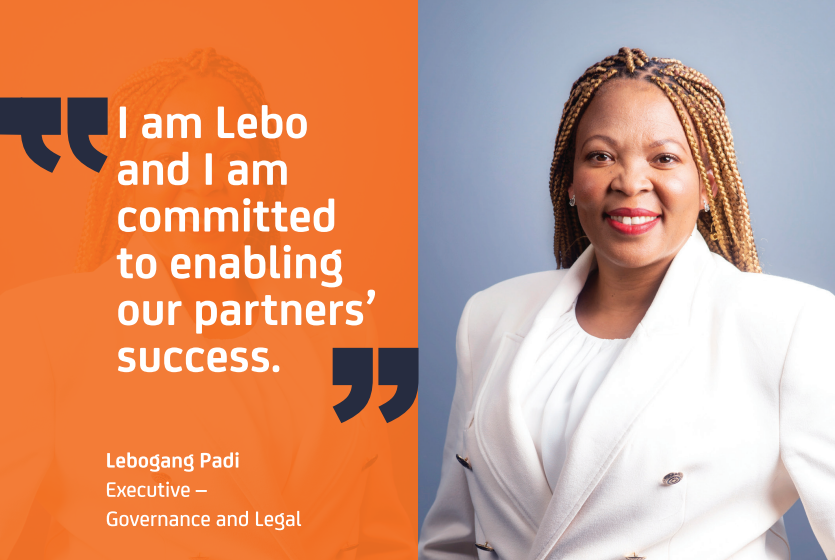
Tyrone Moodley, Chief Operations Officer at Constantia Group
The pandemic taught us many lessons, including that technology solves many problems but not all problems. People need technology but sometimes, they want humans. It is up to us to find out where the line is drawn.
Whilst digital connectivity has answered the need for convenience, we’ve all experienced the frustration of dealing with an automated interface when all you want is to speak to a human. Let’s say you’re in need of an answer to a query or want to inquire about a specific service or offering. A bot might have the solution, but sometimes we need to connect with a person. So, how do we get that delicate balance right? It’s a question that’s becoming more prevalent within the world of insurance.
The rapid rise of connectivity and what it means for short-term insurance
Access to the internet continues to expand at an exponential rate. China offers us a view of this, as connectivity among its consumer base via 5G technology has gone far beyond simple tasks requiring basic internet communication. For example, the advantage of 5G’s reliable and faster data transmission (estimated to be 1000x faster than 4G), will inspire confidence that a road network with driverless cars can navigate the route safely due to uninterrupted real time street data guiding the journey.
The convergence and synergies of 5G connectivity, cloud computing and the Internet of Things (IoT) will result in improved data collection, speed of data analysis and better artificial intelligence decision making.
According to the State of the ICT sector 2022 Report released by ICASA, smartphone subscriptions in South Africa have dramatically increased from 24 million in 2016 to over 65 million in 2021 and rapidly growing. Even if you were to make an extreme assumption of four devices per user, our market dynamics are similar to China, in relation to smartphones having a foothold, making this a likely platform to continue to dominate distribution, communication and payments across many sectors.
So, what does this mean for short-term insurance?
For a start, increased connectivity and quality of data connection will enable richer and more real-time data to be collected and analysed. This will in turn improve insurer’s ability to rate risk, thereby allowing for more personalised insurance products. In addition, there will be more room for the automation of certain processes as well as additional channels of engagement between policyholders, brokers, suppliers and insurers.
Importantly, we must not lose sight of the fact that technology is not a ‘silver bullet’, certainly not on its own. People remain the start and end point of any successful technology implementation and the key to solving existing problems, from creating satisfying customer experiences to executing future strategies and plans.
What are the main problems we need to solve?
For example, as an industry, most of our systems are fragmented, having developed piecemeal over time. This creates a problem for independent brokers trying to operate across multiple insurance channels. Solving this issue will greatly improve efficiency and the solution need not be a novel piece of tech but rather the integration of existing tech applied to the insurance landscape.
The challenge is deciding what such a solution should look like. To do so we need to fully understand the problem that we’re trying to solve and then decide how technology could assist in solving the issue. In this regard, it’s important to consider where and when an end-to-end technology solution is appropriate across different points in a partner and customer journey.
We know that technology cannot replace the value of a skilled broker assessing a complex risk or offering empathy and detailed assistance at a claims-stage. For this reason and more, technology shouldn’t be seen as a replacement for the intermediary but rather an enabler of the unquestionable value and experience they provide.
How? By taking care of certain administrative tasks and freeing up more time, technology can assist an intermediary or broker to be nimbler and more responsive to their client’s needs which can include, among others, assessing a risk profile, giving tailored advice, ongoing risk mitigation advice and providing claims assistance.

Committed to enabling our partners’ success.
Through authentic relationships, we are committed to enabling our partners success by co-creating solutions and unlocking shared
value. Always with a personal touch.
Chat to me about how we can help you grow your business
sustainably.
Licensed Insurers and authorised FSPs.
Toward a more human-centered tech approach
In the past, new clients would complete a simple one-page quote form. As we began introducing technology into the equation, these questionnaires grew in complexity. We started collecting more data to price risk more accurately. While this removed some volatility from our business, it didn’t necessarily improve profits. Instead, we made things more complicated for our brokers and clients.
To avoid this in the future we need to remember the People, Process, Technology framework (PPT). This system helps structure how we think about the people faced with the problem we are trying to solve which, in turn, allows us to help better understand the needs of our policyholders and brokers by first mapping the processes then overlaying a technology solution.
The key here is to recognise that people are the starting point of any technology’s success. This requires us to keep the people developing the software in mind, as well as our end users. If we’re able to strike a balance in how we communicate and understand expectations, developing the technology itself is simple. From the insurance industry’s point of view, this means considering everyone in the intermediated value chain, from UMAs to brokers, suppliers and ultimately, the policyholder.
The Broker is critical as they are the ones interfacing with clients – if we can address their needs, we’re a lot closer to satisfying everyone else. So, if we want to innovate and hit the correct mark, we must ask our brokers, what will help you do your job better?
As insurers, we are weighed down by legacy thinking and systems. We can’t do this because the system can’t do it. We can’t do that because we haven’t done it like that before. If we remove these sorts of barriers by fusing institutional ‘people’ knowledge with technology that enables increased efficiency and faster decision making leading to a better customer experience, we might start delivering better on some of our industry’s demands.

